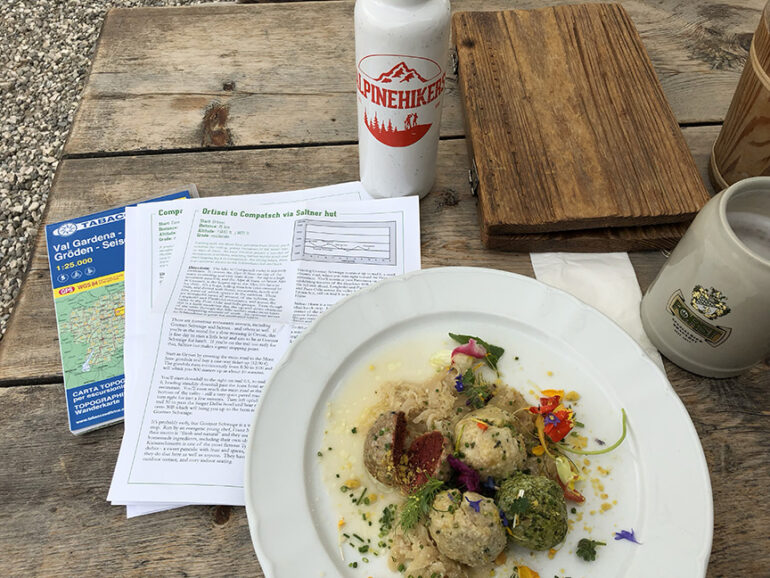One of the things I appreciate the most about travel is the opportunity to experience a culture and history through food. While written and oral history have their place, I would argue some simpler, more humble things better stand the test of time and are maybe a stronger benchmark for understanding a place. For me, what people eat and the culture around regional cuisine is as telling of a place’s history and culture as anything else. The unique ingredients used, the spices, the way that something is cooked or even how it came to be a dish all tell layered stories that are as enjoyable to hear as they are to eat!

Throughout my travels, one of the most consistent things that I’ve learned is that the dishes that really stand the test of time aren’t the complicated ones written about as part of a great feast or royal banquet, but the simple peasant dishes. Even if a dish has the humblest of origins it can still pack the punch of flavor that makes it more memorable than its most dressed up counterpart. Born of necessity, scarcity, and ingenuity these dishes challenge the idea that flavor and abundance are an inseparable pair.
One such dish is Strangolapreti or “Priest stranglers.” Native to the Trentino or South Tyrol region of Italy’s Dolomites this dish is as delicious and luxurious as it is simple to prepare. With the consumption of meat being forbidden on Fridays, a challenge was put forth to satisfy the appetites of priests and other clergy members of the Council of Trent. In the mid-1500s Strangolapreti would be enjoyed or in some cases over indulged in, to the point that they would actually be choked upon because they were being consumed so quickly and in such great volume, hence the name “Priest stranglers.”
Don’t let the name scare you off from these delicious and delicate vegetable dumplings though. Not only are they tender and satisfying but you’ll more than likely have the main ingredients on hand. The most traditional variation of this dish uses spinach but most leafy greens will work as well as many other vegetables like carrots and beets. Combine these vegetables with some milk, stale bread, a bit of cheese and some spices and you’re ready to enjoy a taste of the Italian Alps in your own home.
- 6 oz stale bread
- 8 oz leafy greens (spinach works well and is easy to work with)
- ½ cup milk
- 1 whole egg
- ¼ cup whole milk ricotta
- ¼ cup hard cheese, grated (Parmesan or pecorino work great)
- All purpose flour for dusting
Place rinsed greens into a pot of salted, boiling water for 1-2 minutes. You should be able to see them wilt but retain their color. Quickly scoop them out and immediately submerge into a bath of ice water and set aside. Tear or cut the bread into small cubes in a large mixing bowl then lightly beat the egg and milk together and pour over the bread. While the bread is soaking remove the spinach from the ice water and pat dry, then place on a cutting board to roughly chop. With clean hands massage the bread and milk mixture until it comes together then add the spinach and remaining ingredients. The mixture should come together and easily hold its shape. Season to taste with salt and pepper before scooping the mixture into your hands and forming into small balls somewhere between a ping pong ball and a golf ball. Once you’ve formed all of the dumplings roll them in a bit of flour and place a few at a time into the boiling water that you cooked the spinach in earlier. The balls should hold together easily. Once they float to the top, let them cook for another 2-3 minutes and again scoop them out.
They are now ready to eat but are even more delicious with a quick saute in a pan with butter and herbs or any simple sauce that you might have in the fridge. Garnish with a sprinkle of cheese, a drizzle of olive oil and some salt and pepper. The dumplings do lose their heat quickly so eat them quickly though I don’t anticipate that being an issue you’ll run into.
This recipe can also be easily adapted to be gluten-free. Simply use gluten-free bread and a bit of almond flour or flaxseed meal to bind everything together. The base of this recipe also allows for lots of flexibility based on what you have on hand, crackers can easily replace the bread and many vegetables can be cooked and chopped in place of the spinach.
If you would like to try Strangolapreti on your trip to the Dolomites, you’ll want to check at huts on the Seiser Alm or especially in the Trentino region, like the Fassa valley. Or try the Vögele or Forsterbrau in Bolzano.





